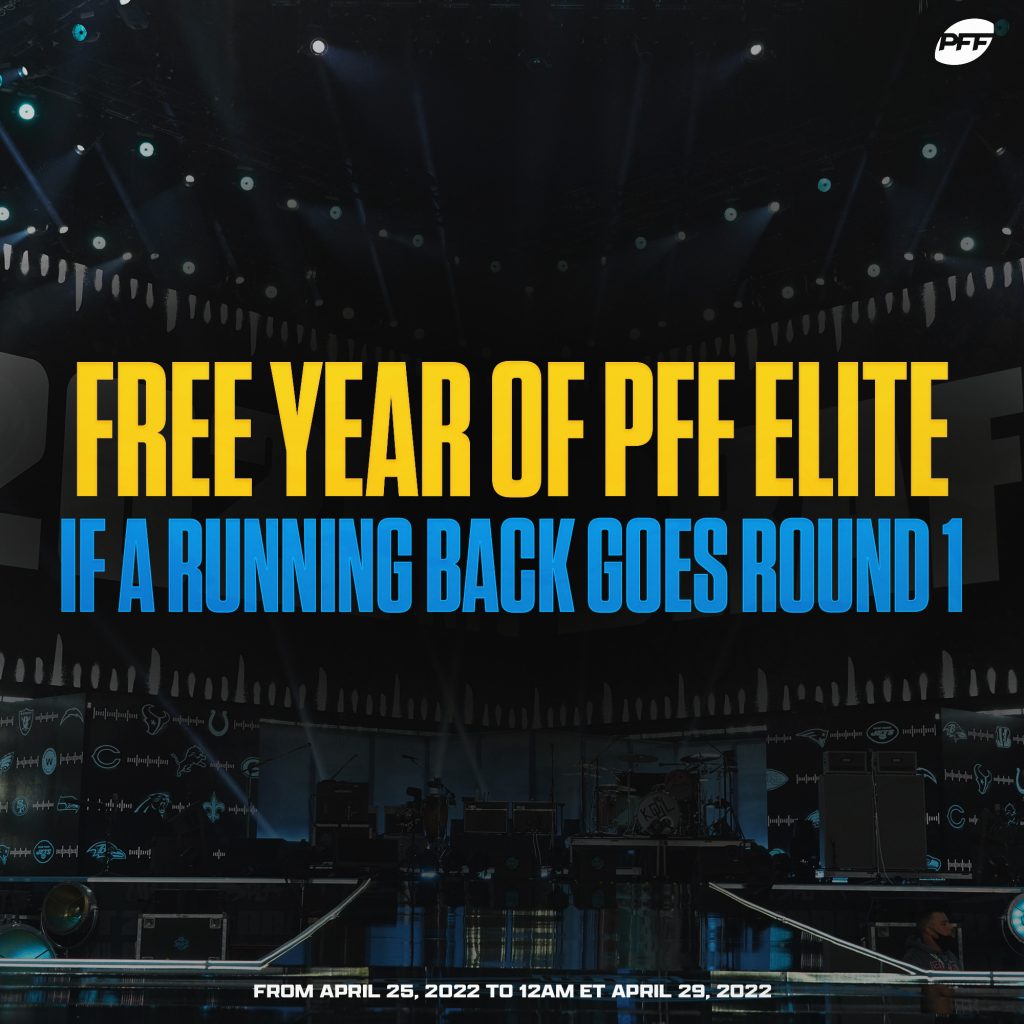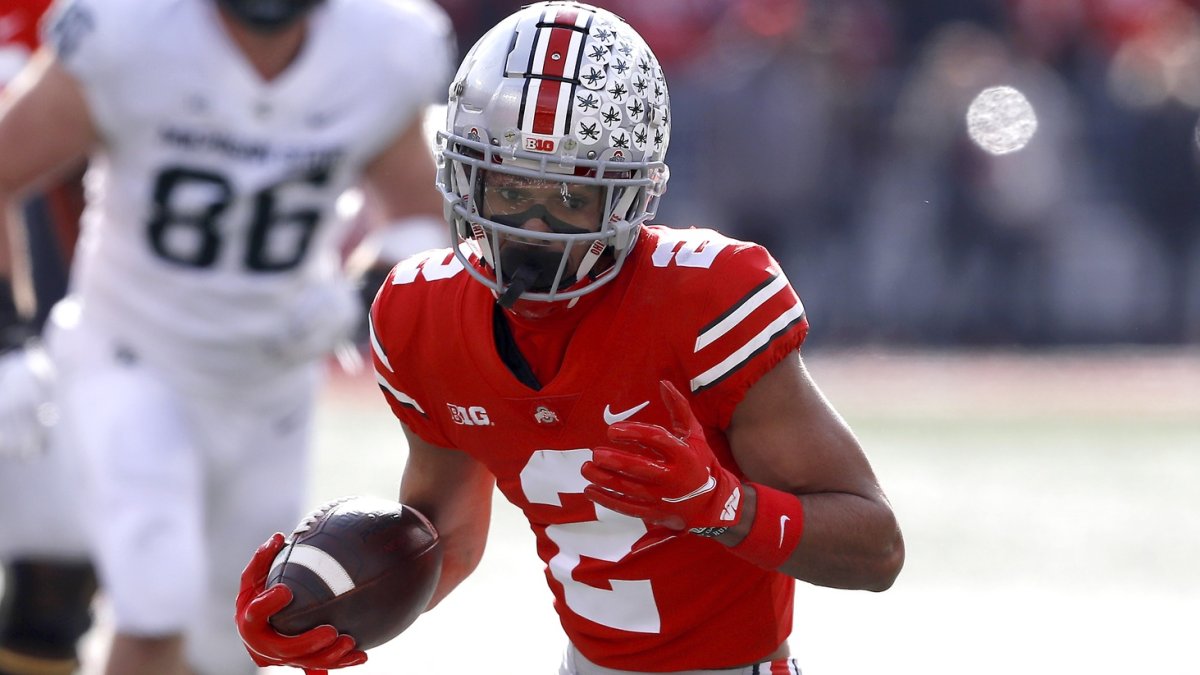The best part of building out a mock draft is when everything lines up — scheme fit, talent, position of need, etc. The following are a few realistic first-round scenarios that fit the bill, starting with the New York Giants adding a shutdown cornerback with one of their two top-10 picks in the 2022 NFL Draft.
New York Giants: CB Ahmad Gardner, Cincinnati
New Giants defensive coordinator Don “Wink” Martindale’s Baltimore Ravens defenses from 2018 to 2021 ranked fourth in man coverage rate and first in blitz rate. He wants to generate pressure through numbers and lean on his cornerbacks to hold up in single coverage. In other words, Martindale will be looking for his version of Marlon Humphrey and Marcus Peters in New York.
The Giants could certainly do worse than James Bradberry and Adoree’ Jackson on the outside, but it doesn’t appear as if Bradberry is in the team’s 2022 plans. A Bradberry trade would clear up over $12 million in cap space New York will need to sign their incoming rookie class. However, it would also create a hole opposite Jackson that needs to be addressed.
Gardner is no stranger to being left on an island. He logged a higher percentage of his career snaps in press coverage (76%) than any other top cornerback prospect in this class, and his career single coverage numbers leave little doubt he can win in those one-on-one situations.
Gardner career single coverage numbers
| Targets | 79 |
| Receptions allowed | 22 |
| Yards allowed | 474 |
| Touchdowns allowed | 0 |
| Interceptions | 7 |
| Passer rating against | 15.2 |
It’s a lot easier to move on from Bradberry if his departure is paired with the addition of that skill set to your secondary.
New Orleans Saints: WR Chris Olave, Ohio State
The best wide receiver fit for the Saints is Alabama’s Jameson Williams, but it’s looking less and less likely he’s going to be available for New Orleans without another first-round trade. Standing pat and drafting Olave shouldn’t qualify as settling, though.
Olave’s “pros” in the PFF Draft Guide line up with exactly what New Orleans needs to add to the wide receiver room:
- Extremely polished route-runner at the deep and intermediate levels of the field
- More than enough speed to separate down the field
- Very sure-handed. Has a 4.9% career drop rate, with most targets coming downfield
Michael Thomas’ return to the field should give the Saints offense a shot of life, but they’re still missing a reliable No. 2 who can create separation consistently and stretch the field. Olave can fill that role after recording 12 touchdowns on passes 20-plus yards downfield over the last two seasons at Ohio State (fourth-most in the FBS). It’s not difficult to see him on the receiving end of a few Jameis Winston deep balls.

Los Angeles Chargers: CB Trent McDuffie, Washington
In an ideal world, Mississippi State tackle Charles Cross slides to Los Angeles at 17, but it’s difficult to see a scenario where that happens. Part of the beauty in the Matt Feiler signing last offseason is he can kick out to right tackle if needed, where he had success with the Pittsburgh Steelers, and the Chargers can find another option at guard later in the draft.
Even though the need isn’t quite as strong at cornerback, it’s hard not to love the McDuffie fit in Brandon Staley’s defense if he’s still on the board.
The Washington cornerback is undersized at 5-foot-11 with sub-30 inch arms, but his burst, physicality and experience in zone coverage should check boxes for the Chargers defense. It’s tough to argue with the production: McDuffie is coming off three consecutive seasons at Washington with PFF grades above 80.0, never grading below 75.0 as a run defender or coverage defender.
The addition of McDuffie would give the Chargers some flexibility in the secondary. He could compete with Michael Davis and Asante Samuel Jr. for a starting job either in the slot or outside while giving Los Angeles more depth in case of injury and the ability to move on from a player like Davis next offseason for additional cap space if the team wants to go that route.
Dallas Cowboys: G Zion Johnson, Boston College
The Cowboys offensive line — perennially one of the best offensive lines in the NFL for the last five-plus seasons — has become one of the roster’s bigger areas of need. Two starters from the 2021 unit (La’el Collins and Connor Williams) are gone, while one of the cornerstones of the group (Tyron Smith) has battled injuries in recent years.
Johnson is one of the safer projections in the draft class to step in and hold his own as a starter. Elite athleticism, good size, strong track record of success as a three-year starter in college, one of the most impressive players at the Senior Bowl — it’s all there.
If Dallas doesn’t add another starting-caliber guard this offseason, its plan is going to be trying to sell Connor McGovern as the starting left guard just one year after McGovern was benched four games into his stint as a starter. The former third-round pick earned a 55.3 PFF grade during that four-week stretch.
Johnson would help solidify the left guard position in an offseason where Dallas has lost talent on offense.
Kansas City Chiefs: WR George Pickens, Georgia
When Kansas City traded Tyreek Hill to the Miami Dolphins, it opted to rework the receiving corps around the idea that the number of quality receiving options is more important than paying top dollar to retain elite talent.
The Chiefs have since added Marquez Valdes-Scantling and JuJu Smith-Schuster in free agency with some of that extra cap space, but they’re still missing the “X” receiver on the outside. That role has often been filled by Travis Kelce, but it’s going to be more difficult to lean on him to win on the outside consistently as he pushes toward 33 years old.
Pickens profiles as the wide receiver most likely to be available in the late first round with prototypical No. 1 size and athleticism — 6-foot-3, 200 pounds to go along with a sub 4.5-second 40-yard dash. He wins at the catch point with some of the best hands in the class.
Career drop rates
George Pickens: 2.1%
Skyy Moore: 3.3%Chris Olave: 4.7%
Jahan Dotson: 5.1%
Drake London: 5.7Alec Pierce: 6.4%
Garrett Wilson: 6.8%
Justyn Ross: 7.1%
Treylon Burks: 7.4%
Jameson Williams: 7.7%
Jalen Tolbert: 8.4%Christian Watson: 12.7% pic.twitter.com/QH1qlhHq2L
— Ben Linsey (@benlinsey_) April 7, 2022
As for production, teams like Kansas City will have to rely on the 88.0 PFF receiving grade Pickens earned as a true freshman in 2019, because he wasn’t able to build on those results in subsequent seasons. An ACL tear that limited him to 63 offensive snaps in 2021 was a big factor in that lack of production the last two years.
There is no replacing what Hill provided the offense, but a starting offense that featured Kelce, Pickens, MVS, JuJu and Mecole Hardman would give the Chiefs more quality depth than they’ve had in recent years.




 © 2025 PFF - all rights reserved.
© 2025 PFF - all rights reserved.